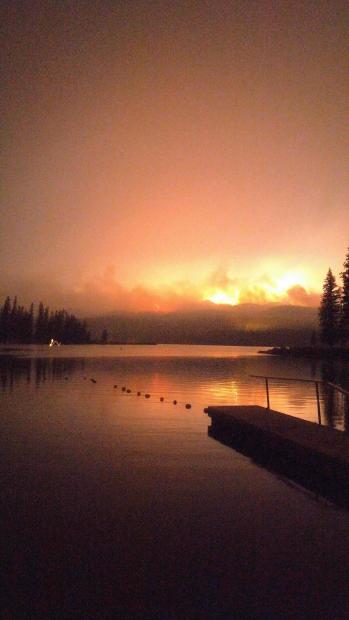Former Forest Service leaders call for Western wildfire commission
Posted: March 19, 2018Source: Treesource

Since 2000, 154 wildfires in the region have cost over $20 million each to control. Many of them cost several times more. Together, these costliest fires, which were less than one-tenth of 1 percent of all Western wildfires in the period, cost more than $9 billion to fight. If you factor in property losses, natural resource damage and environmental impacts, the true costs skyrocket, but they are rarely measured or accounted for. What can’t be ignored is that these unprecedented wildfires tell us we need a much better land-management strategy.
In the aftermath of 9/11, the federal government established a commission to recommend ways to prevent future terror attacks. Among other findings, the commission’s report faulted leaders for a “failure of imagination,” citing a system that was hamstrung by convention.
We face a similar predicament with the West’s wildfires. Nearly every summer, the wildfire season exceeds our imaginations, as each “worst-ever” disaster soon eclipses its predecessor. In the past 20 years, most of the 11 Western states have suffered their worst wildfires on record — several states have done so more than once. At a time when firefighting budgets have never been higher, the West is experiencing its worst wildfires since it first organized for fire protection more than a century ago. If the aim is to protect life and property and minimize natural resource damage — and to do so at the lowest possible cost, without compromising firefighter safety — then we are headed down the wrong trail.
We need to be exploring more imaginative approaches. Protection of human communities ultimately matters most, but sometimes we are simply unable to save homes. Despite state-of-the-art gear, training, determination and other resources, firefighters are rarely able to control the worst wildfires until they get some relief in the weather or a break in the fuels. Neither can managers deal with the compounding effects of climate change, deteriorating forest conditions and uncontrolled residential development at the wildland-urban interface. The West remains tethered to an unworkable protection strategy that is stalled at a dangerous impasse, while costs, losses, damages and deaths all keep mounting.
Imagine a credible commission tasked with investigating the West’s wildfire problem. Its members would examine the full range of contributing factors. They would probably conclude that the West’s wildfire problem is much more than a firefighting challenge — that it is, fundamentally, a failure to manage fire-dependent forest ecosystems at appropriate intensities, intervals and scales. They would find that many of today’s worst wildfire disasters are, ironically, occurring in drastically altered forests that tolerated fire better and burned much less severely 100 years ago.
A century of fire suppression and take-the-best-and-leave-the-rest logging has brought us to this place. But in confounding ways, our contemporary budgeting practices, regulatory controls, land management plans and market forces are often at cross purposes with the most effective means to protect the West’s fire-prone forests. Here’s why:
- Budget appropriations provide almost unlimited funding for wildfire control but starve budgets for wildfire mitigation.
- On national forests, managers are required by law to meet certain regulatory standards for proposed actions aimed at reducing wildfire risks. Yet in the absence of these actions, wildfire impacts that are often far worse are exempt from any analysis of their effects.
- Depending on the way fire-prone landscapes are managed, wildfire risks can become high, but national forest plans don’t require that those risks be identified or considered before plans are implemented.
- In most places, thinning the forest understory needs to precede prescribed burning. Yet few markets exist for small-diameter trees and deadfall, even when the true cost of wildfires could easily justify subsidizing their removal. We need to develop and encourage more of these markets. As this woody material continues to accumulate, wildfire risks only grow, and the business of firefighting becomes ever more lucrative.
Historian Barbara Tuchman, in her book, The March of Folly, observed that governments often remain stubbornly addicted to a counterproductive course of action. They pursue the unworkable, she said, sacrificing the possible.
We all know that the West’s wildfire problem is getting worse, but we have been slow to confront this reality. Unable to envision future threats and explore solutions across the full range of contributory factors, we cling to an untenable position. Bound to convention, we are left to suffer the next unimaginable disaster.
It is time for a commission on wildfire.
